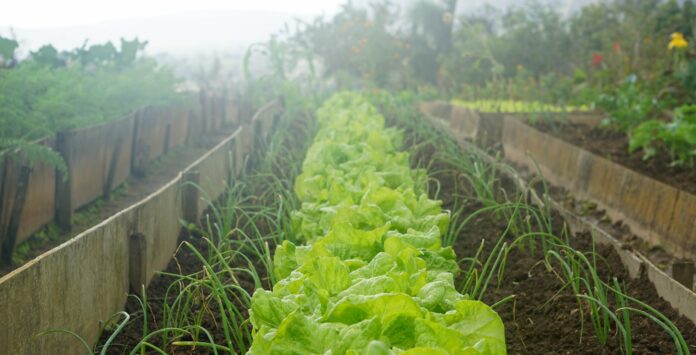Living in the city, it can be hard to feel like you know exactly where the food you eat really comes from. But not so for those subscribed to CSAs, or community-supported agriculture programs. If you want to take a more active role in producing the fruits and veggies that wind up on your plate, joining a CSA may be a great option for you—but be aware that there may be risks and responsibilities involved as well.
What Are CSA Programs?
Community-supported agriculture is a revolutionary new approach to food distribution that has grown increasingly popular in urban environments over the last three decades. These are different from community gardens that you may find in your neighborhood. Specifically, subscribers “invest” in a local farm’s growing season by paying a one-time or monthly sum—totaling between $300-$600 per season—and in exchange receive periodic shares of fresh-picked produce over the span of four to six months.
This agricultural model provides financial security to farms at risk of being run out of business by large-scale industrial farms. Instead of the farm’s survival being utterly dependent on the profitability of any given growing season (and in peril of going broke over one bad crop of kale) the subscribers and the farmers take on the risks together.
Each CSA operates under slightly different procedures depending on the values of the associated farm. Some put more emphasis on community involvement and creating a personal relationship between farmer and consumer than others, and some even provide the option to receive meat and dairy items alongside your produce. There are currently over one hundred different CSAs offering subscriptions to New York City residents, so there are plenty of options to choose from.
What are the Pros and Cons of getting a CSA subscription?
Pro: You’ll get the chance to try new kinds of produce.
The fruits and veggies found in most grocery stores are limited to a few hardy, long-lived varieties that can withstand the bumps and bruises of long-distance shipping and days spent sitting on the shelves. But because CSA produce doesn’t have to travel as far (or be grown in the mass quantities required for industrial farms to make a profit), they can branch out to explore an exciting variety of tasty heirloom produce. For example, the Bronx-based CSA Katchkie Farm offers such items as kohlrabi, cipollini onions, fennel, and amaranth greens.
As a bonus, because the produce is pre-designated to be delivered right to you on a specific day, they are harvested at the peak of ripeness and are ready to enjoy immediately!
Con: You don’t always know what you’re going to get.
Because you pay for a season’s worth of produce in advance, what you actually receive will depend on how fruitful the growing season turns out to be. If your CSA farm is hit by a drought or suffers a swarm of locusts, the return on your investment may be somewhat diminished.
Subscription holders don’t necessarily get a say in what the farmers plant, so you also aren’t guaranteed to receive your absolute favorite kinds of fruits and vegetables with each delivery. And since the growing seasons of CSA farms are not artificially extended as they often are at industrial farms, you will only receive produce when it is actually in season—the contents of your share will lean more toward leafy greens in the spring, fruits and vegetables in the summer, and root vegetables and gourds in the fall.
Pro: You’ll feel a greater connection to the natural agricultural cycle.
Some people find adapting their diet to the growing patterns of their produce to actually be liberating, as it forces them to break out of repetitive culinary routines. Eating the same thing every day can lead to nutrient deficiencies, though busy schedules and the easy accessibility of takeout and frozen meals makes it difficult not to fall into this trap. Incorporating CSA produce into your diet allows you to reconnect to natural, traditional diets enjoyed by our ancestors—and to ensure you’re taking in a healthy variety of vitamins in the process.
Some CSAs have a special focus on helping their subscribers feel connected to the agricultural process and the land on which their food is grown. These farms encourage subscribers to travel out to the fields themselves to participate in the harvest and gain a greater appreciation for the love and labor that goes into farming.
Con: CSAs are a commitment.
The idea going on a road trip to spend a day digging in the dirt does not appeal to everyone, however. And, though there are many CSAs with no such service requirements, being a CSA subscriber means taking on a couple of other commitments.
First and foremost, you’ll be responsible for heading to the CSA pickup location once a week during the designated time. If you’re unable to grab your produce in time, you’ll often just have to miss out on your share for that week.
Consuming a weekly shipment of CSA produce is also a commitment unto itself. If you thrive on fast food, you’ll need to adjust to making home cooked meals at least several times a week in order to use up your produce before it goes bad.
Pro: You get a lot of bang for your buck.
An overabundance of produce is just another benefit of CSAs to some people. And because CSAs are almost always significantly less expensive than buying a comparable amount of produce at the grocery store, you can feel good about sending your extras home with family and friends.
If you’re worried about being able to finish all of your food while it’s ripe or are just trying to save even more money, certain CSAs offer a “split share” option in which subscribers pick up produce every other week rather than every day. You can also create an “unofficial” split share by going in on a full CSA share with a friend and then alternating your pickup weeks.
Con: Spots can run out fast.
CSAs have only grown in popularity during the Covid-19 pandemic—one appeal of a supply chain that cuts out the middleman is that it means fewer strangers handling your food before it ends up in your pantry. As a result, many of the city’s CSAs fill up their subscription rosters before the winter ends.
If you’re interested in subscribing to a CSA, your best bet is to sign up as soon as you can in order to guarantee your spot! LocalHarvest maintains a comprehensive directory of New York-area CSAs that makes finding your perfect community-supported agriculture program a breeze.
Sophie McIntosh is a Brooklyn-based writer and dramaturg hailing from Sun Prairie, Wisconsin. Her plays have been produced by Imaginarium Theatre Company, Platform Production Company, and in the Boston Theater Marathon. Check out more of her work at sophiemcintoshwrites.com!



